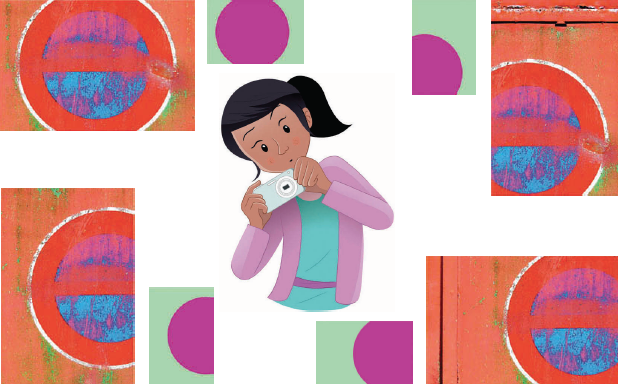Great Advice on Introducing Kids to Photography June 30, 2016 – Posted in: Photography
Our new book Photo Adventures for Kids: Solving the Mysteries of Great Photos offers kids a fun and engaging intro into the world of photography. But before you and your child begin, consider these notes from author Anne-Laure Jacquart.
Consider it an “exploration” rather than a lesson
You want your kiddo to explore the process of photography without it seeming too much like a day in the classroom. Sometimes it’s best for young children need to learn the basics of photography by using a hands on approach. It would be beneficial for you to go out and explore with them. Grab your camera (and theirs!) and show your child how to choose a subject, how to move the camera, how to move in space in order to capture one’s environment, and how to explore the possible interactions between a subject and the frame.

Work with trial and error first
While beginning to explore photography, implement a variety of strategies in order to capture the best photos. This allows the child to try many different approaches to photography and discover what works for them and what doesn’t.
Don’t expect your child to “improve” his or her photos in the way you might expect at first, or to produce images that are less odd than the ones she or he has taken so far. In fact, it should be just the opposite! Photo Adventures for Kids pushes young readers to take even more surprising pictures than before as they experiment with new images while solving each “photo mystery.”
Support, encourage, accompany!
Don’t express any value judgments about the photos that your child takes, even if you find them disorienting.
Be encouraging and curious about the child’s photographic process at all times. Instead of saying “Oh wow, that one really didn’t come out at all, did it?” or “What a bizarre picture,” show your interest and ask the child questions like, “That’s interesting! What made you want to take that picture?” “What subject did you choose for this one?” or “How did you go about taking a picture of that?”
You may be very surprised to discover that there are serious photographic intentions behind pictures that, to you, look like they were framed completely by hit or miss. This affirming, thoughtful process is what will make your budding photographer into an accomplished artist in no time at all! Patience! Give the child the chance to digest what he or she has learned and understood and put it all into plenty of practice. The “successful pictures” will follow; you can be sure of that!
Don’t worry about the camera
It’s natural for you to be concerned with the technical aspect of photography, but at this stage, the child is not going to be concerned with adjusting apertures and exposure times or feeling the need for complicated features. So just about any camera (even a smartphone) will be just fine, as long as it can produce photos of a quality that pleases the child. To begin, you should be thinking in terms of looking through your cupboards for a small digital camera that nobody is using!

Do worry (a little) about picture quality and camera size
Producing satisfying images—with good colors and sufficient contrast, even in low light conditions—will motivate the child to stick with photography. Look through online forums and websites that compare the image quality of various cameras (www.dpreview.com) in order to get some ideas!
Also, take a quick look at the design and ergonomics of the camera. A child should be able to hold it comfortably and use it easily. It shouldn’t be too chunky or too heavy. A well-designed compact or hybrid camera ought to be perfect! If you are buying a new camera, let your child try it out, if possible. (Or if you buy a camera online, make sure there is a good return policy.) Can your child hold the camera well? Does his or her index finger fall naturally on the shutter button?
Incorporate Resources too!
Photo Adventures for Kids, which acts as the third guest at the photography party, explains all of these concepts in a manner that is progressive and playful, so that the reader can discover for him- or herself what photography does and the pleasure of creating images. Whether they’re at home or at school, in the backyard or on a field trip, in the city or in nature, they’ll learn the important lesson of how to “see” where the best photographs are hidden in any location.
Packed with games, strategies, lessons, and challenges, Photo Adventures for Kids makes learning about photographic composition and framing easy and fun. The book also features a cutout “viewfinder” device at the back of the book, which kids can use to explore their environment.



